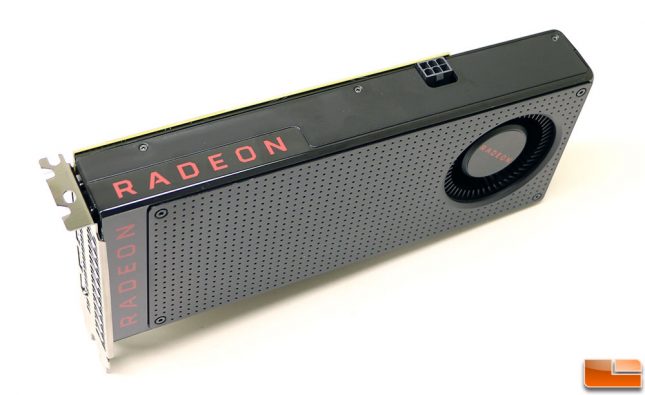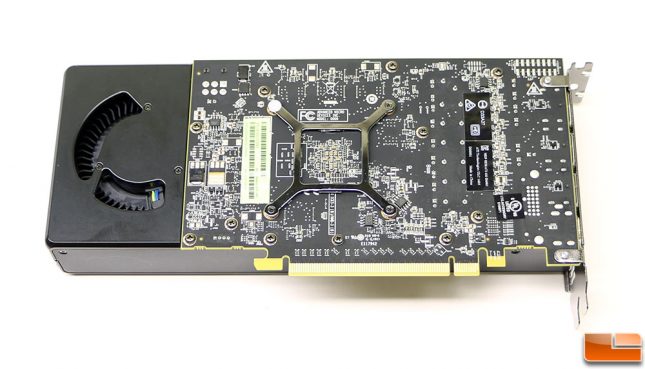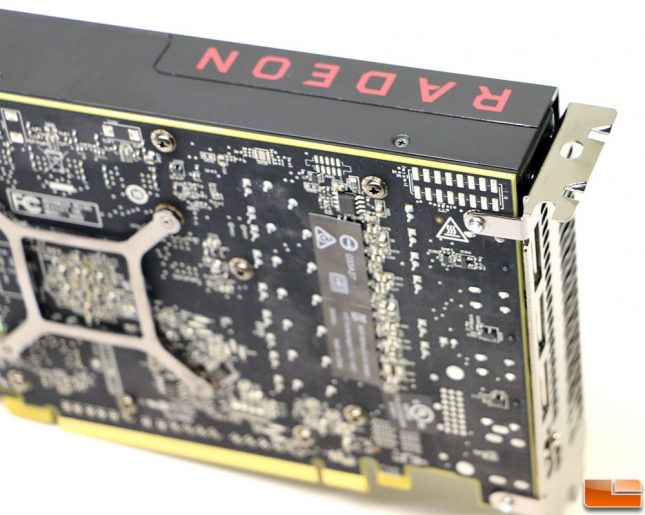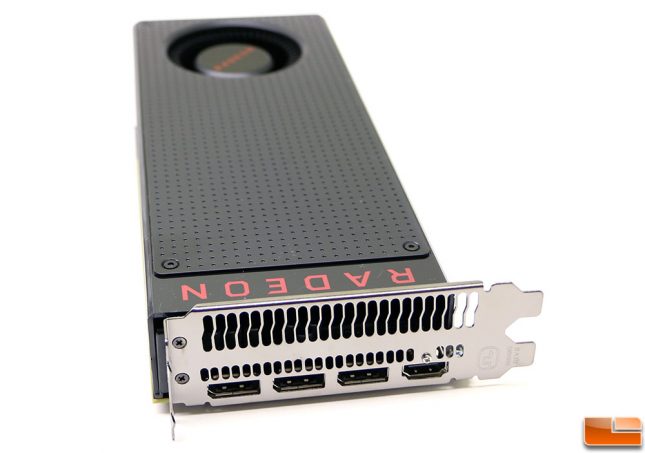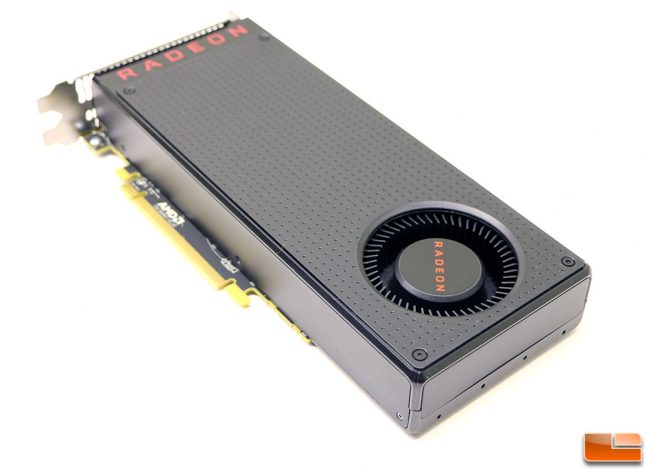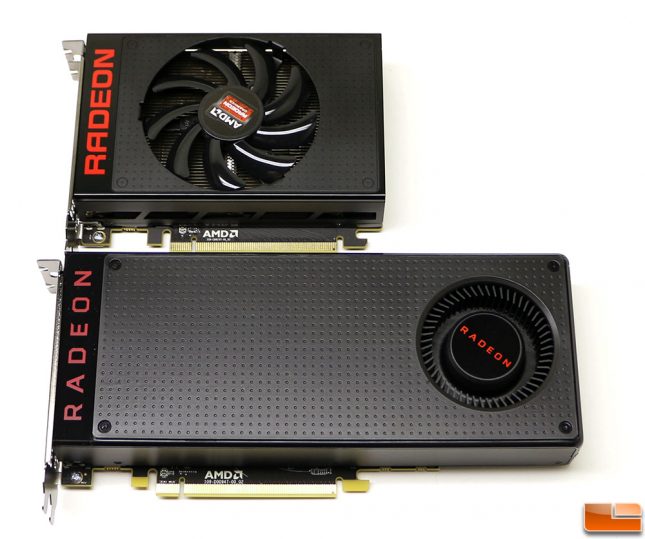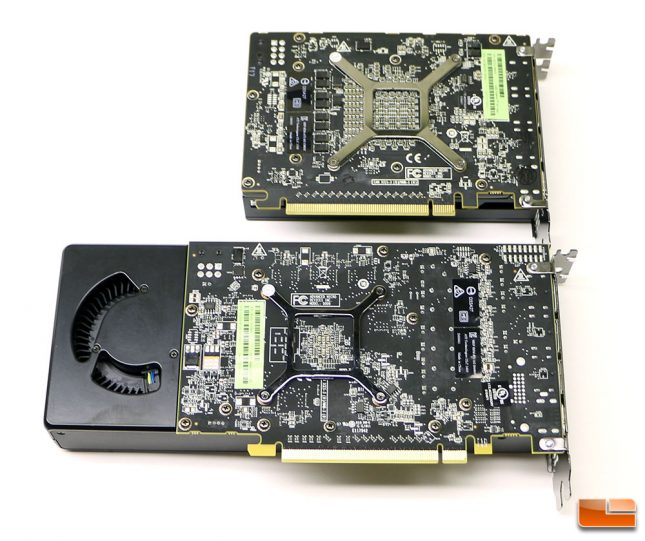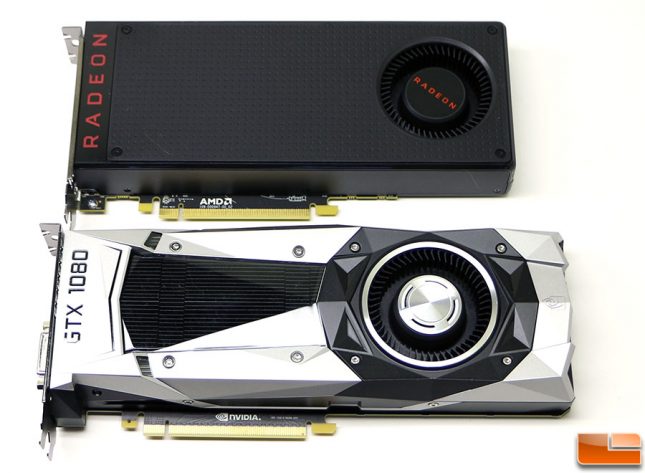First Look At The AMD Radeon RX 480 8GB Video Card
Our AMD Radeon RX 480 8GB reference card has shown up for testing! We got the card this morning, gave it a quick photo shoot in the light box and and already have it running benchmarks on the test bench! We noticed some other sites posting up ‘first looks’ of the AMD Radeon RX 480, so we figured why not since we have the 14nm Polaris powered graphics card as well!
The AMD Radeon RX 480 8GB is your typical dual-slot card that measures in at just under 9.5″ in length. The RX 480’s single 6-pin power connector resides along the top edge of the 150W TDP card. The AMD Radeon RX 480 has 36 Compute Units for a total of 2,304 Stream Processors. Thanks to Newegg we know that the base clock speed is 1120MHz and a boost clock of 1266MHz. If you use the boost clock speeds that puts this card at 5.8 TFLOPS of compute power! The 8GB of GDDR5 memory uses a 256-bit memory bus interface and is clocked at 2,000MHz for 256GB of memory bandwidth.
Flipping the AMD Radeon RX 480 over we can see that the PCB is pretty small at just 7.0-inches in length! None of the 8GB worth of GDDR5 memory can be seen on the back of the card and AMD asked us not to remove the GPU cooler.
AMD has been using the PCIe bus for CrossFire multi-GPU support and we’ve heard rumors that as we move beyond 4K and 5K video content that there will be more data than the bus can handle. It looks like AMD has tinkered around with a new CrossFire interconnect as there are 16-pins where a CrossFire interconnect has been used in the past.
When it comes to video outputs the AMD Radeon RX 480 has three DisplayPort 1.3/1.4 HDR outputs and one HDMI 2.0 video output. The rear grill also has been ported for optimal airflow to help the hot air from the Polaris 10 GPU to be exhausted out of the case.
The fan shroud is sealed on the end and along the bottom, so the only opening are on the front and back covers.
Here is a look at the AMD Radeon R9 Nano (top) and the AMD Radeon RX 480 (bottom) to give you a better idea of the size of the card. The AMD Radeon RX 480 is a very small card.
Flipping the cards over you can see that the AMD Radeon RX 480 PCB is only about an inch longer than the Radeon R9 Nano, which is impressive seeing how the Nano features HBM memory and the 480 uses GDDR5 memory that has to be on the PCB.
The AMD Radeon RX 480 4GB is priced at $199 and is being marketed and hyped up as the affordable card for VR with solid gaming performance for those with 1440p displays. The price hasn’t been set on the Radeon RX 480 8GB video card that we were sent, but we expect it to be in the $229 to $249 price range.
AMD Polaris Versus NVIDIA Pascal
The NVIDIA GeForce GTX 1080 Founders Edition (pictured above with the RX 480) is also built using a similar 16nm FinFET processor and has a core clock of 1607 MHz and a boost clock of 1733 MHz. Some partner cards offer boost clocks of upwards of 1900 MHz and many are getting over 2000 MHz by overclocking. The RX 480 clock speeds of 1120 MHz base and 1266 MHz boost on the Polaris GPU sound low compared to what NVIDIA is capable of doing with Pascal, but these cards are at totally different price points since the GeForce GTX 1080 Founders Edition is $699.99 if you can find one available. Don’t be disappointed by the clock speeds as the Radeon RX 480 is priced where most GeForce GTX 960 cards are priced at and is half the cost of a GeForce GTX 1070! AMD is going after mainstream gamers with this card and is hoping to win back gamers and market share by winning the $199 price point where most graphics cards are sold.
We can’t talk about the AMD Radeon RX 480 performance numbers that we are currently running, but we can’t wait to chart the numbers and see how this card performs. We can’t wait to see not only the overall gaming performance numbers, but also the power consumption and temperatures since this is the first card from AMD built using the 14nm FinFET processor on the Polaris GPU. We’ll find out the results soon enough and share those numbers with you on June 29th!

